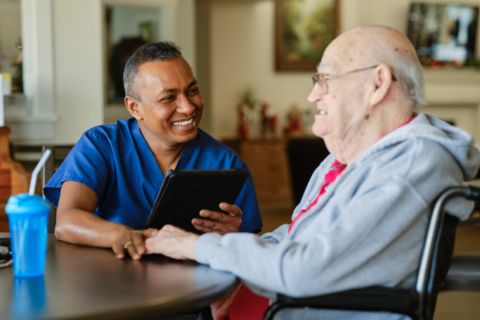How weight gain leads to back pain
Research into older men’s health reveals a good reason to watch what you eat and how much you exercise.

Linking back pain with body weight would seem to be a natural conclusion to make. However, there’s been no conclusive evidence ... until now.
A Monash University study has established the connection after assessing 700 men living in Geelong, Victoria.
The School of Public Health and Preventive Medicine study examined men with no or low-intensity back pain and disability between 2006 and 2010.
Ten years later, those who had developed high-intensity pain and/or high disability were identified. Weight, body mass index (BMI), abdominal circumferences, fat mass, and lean mass were assessed at the beginning and end of the 10-year period.
It was found that across ages, gaining as little as three kilograms of weight over five years was linked to back pain and high rates of disability a decade later.
In older men, those with more muscle were less likely to develop severe back pain and high disability.
Study leader, Professor Anita Wluka, said the finding “highlights the importance of maintaining muscle mass in older men”.
Age-related muscle loss, called sarcopenia, is a natural part of ageing, especially for men. After age 30, you begin to lose as much as 3% to 5% per decade. Most men will lose about 30% of their muscle mass during their lifetimes.
This can mean greater weakness and less mobility, both of which may increase the risk of falls and fractures and, as the Monash study has found, an increased risk of back pain
While it’s estimated that back pain will affect more than 850 million people worldwide by 2050, there are limited effective treatments for it.
“Thus, there is an urgent need to identify modifiable factors to be targeted in order to reduce the burden imposed by high-intensity back pain and related disability,” Professor Wluka said.
Back pain and related disability limit involvement in regular work, physical activity, socialisation, and personal care, costing $4.8 billion annually in Australia
Individuals with severe symptoms of back pain consume double the healthcare expenses used by those with low-impact pain
High disability is associated with 2.5 times higher healthcare cost or societal cost and poorer quality of life than those with only pain.
Most people over 60 are not getting the physical activity they need. However, if you’ve lost some muscle mass, you can get it back.
If you can, seek professional advice such as working with a personal trainer who can assess your needs and help you get started on a plan.
A trainer can also teach you specific exercises, work with you on adaptations and help you progress safely so you can reach your fitness goals.
Gradually increase your activity with these:
Strength exercises. Lift weights or do exercises like sit-ups, push-ups and squats that use body weight as resistance. Try to do two to four sessions a week.
Balance exercises. Examples include walking heel to toe in a straight line as if on a balance beam, standing on one leg, or standing up from a chair repeatedly.
Aerobic training. Get your heart rate up with activities such as dancing, pickleball, bicycling, swimming, and walking.
Protein is essential for feeding muscles. With age, the body becomes less effective at breaking down and using protein.
Try to have roughly equal portions of protein at each meal. For a 90 kilogram person, this would be 48 grams per meal. That’s about the amount of protein in:
Two eggs, a cup of milk, and two slices of wholegrain bread
A sandwich, a cup of chicken or chickpea salad, and two slices of wholegrain bread
85 grams of salmon, one cup of baked beans, one cup of green peas and one cup of milk.
Ask your healthcare provider or dietitian about protein supplements and shakes. Fruits, vegetables, and whole grains give your body the nutrients it needs to fight illness and heal injuries.
Research shows that omega-3 fatty acids might help with muscle mass and function. Omega-3s are naturally found in fatty fish, such as salmon and mackerel, and flaxseed.
If fish isn’t usually on your menu, your healthcare provider might recommend a supplement.
Related reading: Monash, The Conversation, Mayo Clinic





